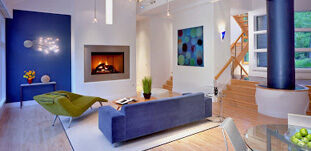
When I first heard about LEED, I thought it was generally a great idea. What could be better than a points system based on specific criteria for sustainable sites, water efficiency, etc. that would allow people to create new or convert existing buildings into paragons of green excellence? And in large part, this is exactly what LEED offers. They have different certifications for new construction, homes, so on and so forth. The building owner has an opportunity to save money by reducing their energy & water consumption, not to mention the added bonus of helping to save the world. Sounds pretty good, right?
The only question, especially for an office like ours that has been doing sustainable design for the past thirty years – long before it was cool, is what on Earth for? Why become a LEED AP architect? Why should I suggest LEED certification for my client’s building?
Well, if you’re doing a commercial project, there could be plenty of good reasons. Depending on where you are, a commercial building owner could realize a significant reduction in property taxes or other incentives for obtaining LEED certification.
But what if you’re not doing some big commercial project? What if you’re just building you’re own house? What’s the incentive or advantage then? We asked this question last month at a seminar our office attended on green guidelines and rating systems. Believe it or not, the presenter, who shall remain nameless, after a moments hesitation, said the following: “Bragging rights.”
Can you say that again? Not sure I heard it. “Bragging rights”? Imagine the following scene, if you will:
It’s Sunday morning, and Phil is outside raking the gravel on the pervious driveway in front of his brand new environmentally conscious home.
His next door neighbor, Cindy, wearing a bathrobe and fluffy bunny slippers, emerges from her front door and walks to the curb to retrieve her morning newspaper.
Noticing Phil, Cindy gives a friendly wave and comments on what a beautiful day it is.
Phil smugly replies, “I have a LEED platinum certified home, loser. Enjoy your newspaper, you insensitive Earth-killer.”
By now, you’re probably saying to yourself, wow – this guy really has it in for LEED. And by way of reply, I would say, no, I don’t. But I do have have some definite issues with it.
As stated above, there are to this point no monetary incentives or other benefits to an owner building a LEED certified home. This in and of itself is not a big deal – I don’t believe that there has to be a financial basis for doing the right thing. However, by the same token, it shouldn’t be cost prohibitive either.
The problem is that the certification process is costly to the owner, and thereby seems to punish him/her for wanting to do something positive. On top of the costs of retaining the services of an architect and contractor, the owner must also pay a LEED consultant throughout the project and a green rater furnished by a “Provider” (A green rater is a third party who verifies the work and performance twice during the project). Additionally, the owner must pay to have the project registered and then pay again to have it certified.
For all this, the owner gets “Bragging rights”(yippee), a plaque, and the environmentally friendly home the architect should provide them with regardless of LEED – as we have always done and will continue to do.
In conclusion, I would simply suggest to someone building their own home that LEED certification , at this point, is not worth the time or expense. However, if you must have certification of some kind, Energy Star seems to be less onerous and less expensive. Energy Star is also administered through the EPA and DOE, whereas LEED is administered through the US Green Building Council, which is a 501(c)3. This may explain their need to charge fees for everything under the sun from registration and certification fees to membership fees and study materials (for professionals seeking certification) to pay for overhead.
